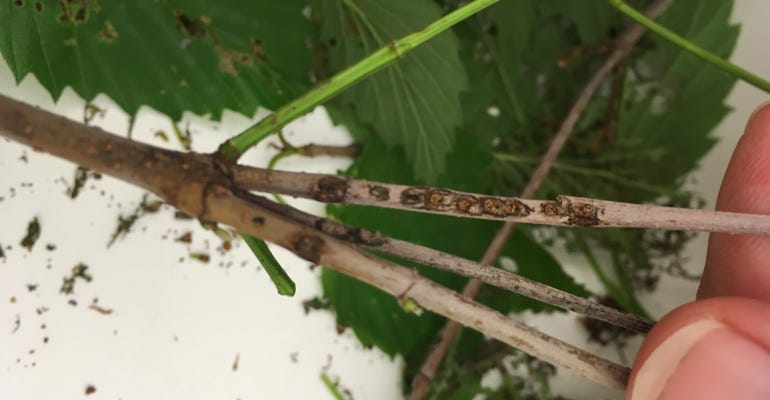August 15, 2019

The viburnum leaf beetle, an invasive insect that feeds on viburnum plants, has been found for the first time in Minnesota.
A resident of Eden Prairie first noticed an insect feeding on arrowwood viburnum leaves and reported the find in June to the Minnesota Department of Agriculture. MDA staff then inspected the area and collected samples for analysis. USDA officials determined the insect was the viburnum leaf beetle.
The beetle is an invasive insect native to Europe and is currently found in the northeastern United States and Wisconsin. It feeds exclusively on species of viburnum and can defoliate the plant. Repeated defoliation weakens the plant over time and can eventually kill viburnum.

LOOK OUT: Minnesota residents are asked to look for evidence of the viburnum leaf beetle and to report it to the Minnesota Agriculture Department. The beetle lays its eggs along the twigs in egg pits that are visible to the naked eye.

“The insect was able to somehow hitch a ride from outside Minnesota and find its way to the Twin Cities metro area,” says Angie Ambourn, supervisor of the MDA’s Pest Detection Unit. “Unfortunately, this is yet another example of the ease at which invasive insects, plants and diseases can quickly spread throughout the U.S. and the world.”
The larvae of the viburnum leaf beetle are yellow to light brown with black spots and dashes on their bodies. They chew holes in the leaves in a pattern that is very similar to Japanese beetles. Adult insects lay eggs along the twigs in egg pits that are easily seen with the naked eye.
There are several ways to control the spread of the viburnum leaf beetle. Homeowners and landscapers can select viburnum varieties that are resistant to the insect. Pruning and destroying infested twigs is also an effective control method. There are also chemicals available.
“It’s important that we get an understanding of where this insect may be in Minnesota and how big of an issue this is to homeowners,” Ambourn says.
MDA requests that residents report suspected viburnum leaf beetles to the agency. They can send in photos, location and other info via Arrest the Pest. Email [email protected] or call 1-888-545-6684. The invasive beetle also can be reported to EddMaps online.
For more information on viburnum leaf beetle, visit hort.cornell.edu/vlb/id.html or the University of Wisconsin’s website.
Source: MDA, which is solely responsible for the information provided and is wholly owned by the source. Informa Business Media and all its subsidiaries are not responsible for any of the content contained in this information asset.
You May Also Like




